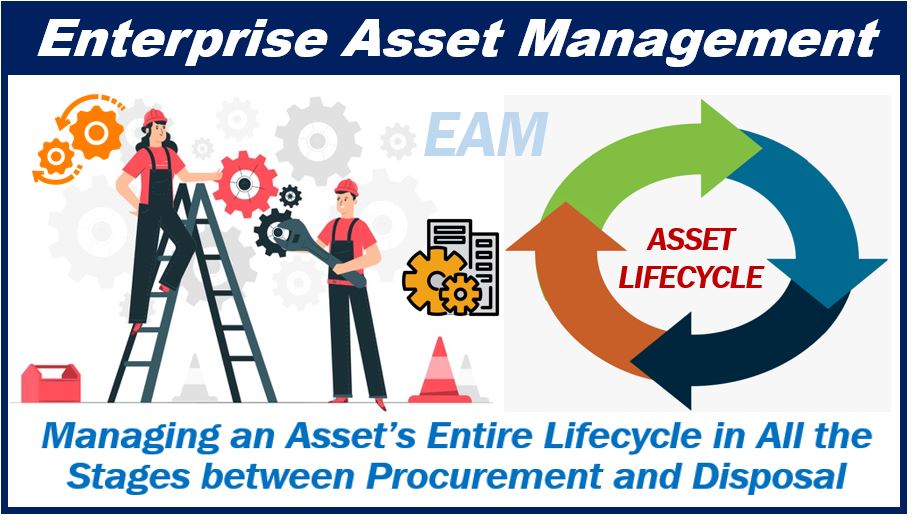Every organization wants to derive maximum value from every asset investment, whether industrial equipment, vehicles, or heavy equipment. Otherwise, the assets can become a potential liability and a source of financial loss.
Asset-heavy organizations need enterprise asset management to realize asset’s absolute potential to remain productive and profitable. But what does enterprise asset management entail?

Enterprise Asset Management (EAM): What it is
EAM is managing an asset’s entire lifecycle in all the stages between procurement and disposal. It is a blend of processes, tools, and systems to manage and ensure assets perform at targeted service levels.
EAM ensures assets are in optimal condition through detailed operational and maintenance costs, performance tracking and reporting, practical scheduling, and predictive analysis. It is all about maximizing the asset’s potential until its end of life or disposal.
Best Practices
Solid Data
A solid EAM strategy relies on accurate, up-to-date, and comprehensive data. Every stage of the asset requires correct information so that solid data back decisions and actions.
This requires centralized and updated data and management to prevent problems associated with data silos scattered across the business. Typically, a unified platform enhances the ability to spot problems in procurement and ensures effective maintenance scheduling.
Effective Communication
Continuous organization-wide communication and collaboration are crucial to enterprise asset management. As assets or equipment pass through many hands, inefficiencies can quickly occur if there are no proper communication channels.
A centralized system allows the personnel handling the maintenance to have better information and provide the right service. Technicians and mechanics can submit their reports and ensure real-time communication.
Procurement in your organization also becomes effortless. Typically, managers can examine the purchase orders and liaise with different departments for clarification and approval. The resulting improved response time reduces downtimes and additional costs. Better communication channels are empowering to the employees. They can perform at their best because they are sure of what’s required.
Transparency into an Asset’s Life Cycle
Improved visibility into an asset life cycle is critical to optimizing its potential. You can track the asset wherever they are in their life cycle, spot any possible anomaly, and adjust quickly. This saves time and money.
The business can purchase parts and supplies to the actual model number, quantity, and type for the continuous performance of the asset.
Such transparency highlights any problems as they occur, and the organization can take action on time to reduce costs of repair. Detecting problems early ensures that a minor issue with a particular accessory does not affect other parts, and increases repair costs. You can spit issues before they occur and take corrective measures to reduce downtime and costs.
Effective Maintenance
Sudden equipment breakdowns can interrupt productivity and prove costly to your organization. Classically, preventative and predictive maintenance is at the core of EAM through effective scheduling. You can prevent such instances with automatic scheduling to reduce or eliminate sudden asset crises.
Physical asset management increases asset reliability, effective inventory management, and systematic preventive maintenance. By leveraging the best EAM practices, your business keeps up with the changing trends and can compete effectively.
Interesting related article: “What is Maintenance?”
